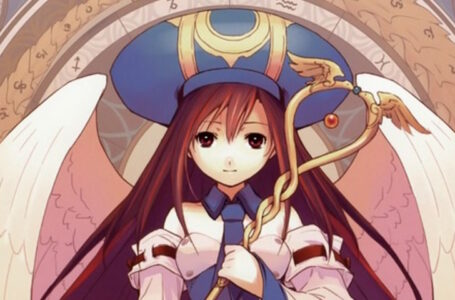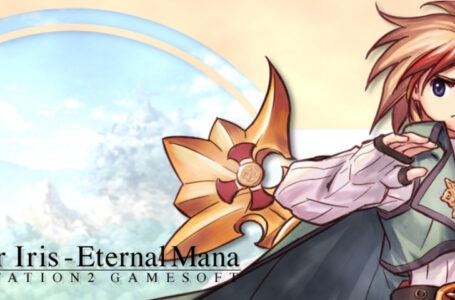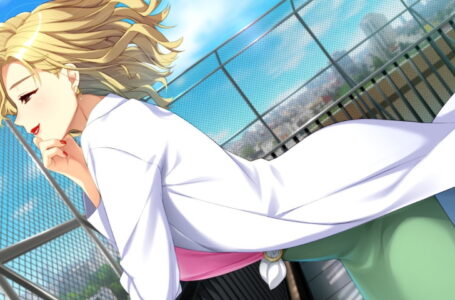It was all a dream: exploring Atelier Sophie 2’s story
It’s almost time to wrap up our in-depth exploration of Atelier Sophie 2: The Alchemist of the Mysterious Dream, but there’s just one thing to do before we close the (Mysterious) book on it for good: talk a bit about its narrative.
This means that there will be spoilers ahead. So if you haven’t played the game yet and don’t want to know about stuff that happens, stop reading now. If, on the other hand, you either don’t care about spoilers — or have already seen what the game has to offer — read on. Because there’s a lot to talk about!
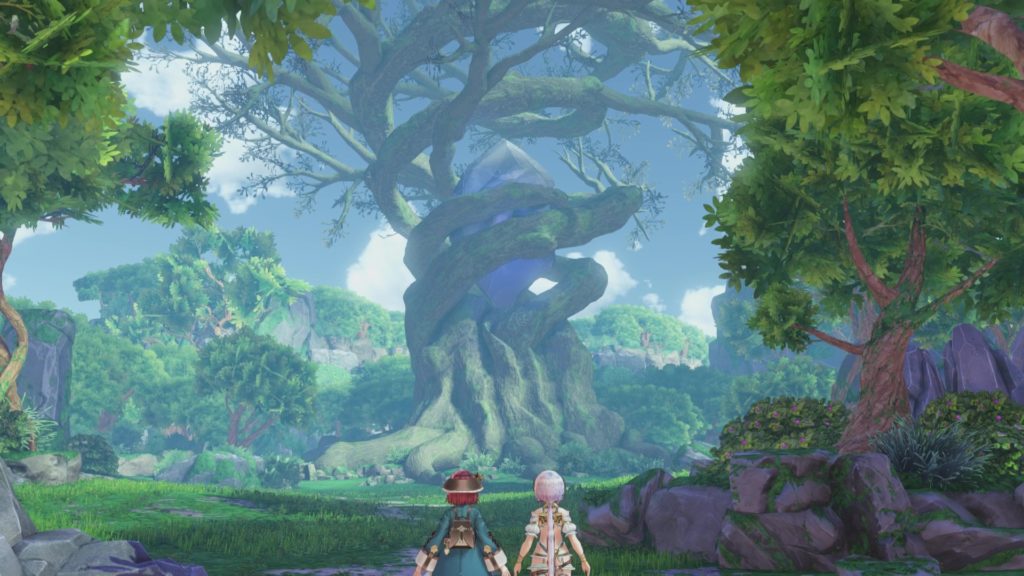
To recap, the premise of Atelier Sophie 2 is that it unfolds between the original Atelier Sophie and Atelier Firis: The Alchemist and the Mysterious Journey. While on the road to Ertona, Firis’ hometown and the point at which Atelier Firis opens, Sophie and her mentor Plachta (who, following the events of Atelier Sophie, is the soul of an alchemist from years gone by in the autonomous body of a doll) stumble across a strange tree, and before long they find themselves sucked into a mysterious other dimension.
Rather than being a horrible hellscape filled with monsters, though, they find that this other world is actually a rather pleasant one. Known as Erde Wiege (“Earth Cradle” in German), it is, it seems, a world populated by dreamers brought there at the behest of Elvira, Goddess of Dreams. Conveniently for series continuity, regardless of how long one spends in Erde Wiege, no time passes in the real world, and thus by the time Sophie and Plachta find themselves there, there are already people who have been living there for a very long time indeed, having shown no physical signs of aging.
The purpose of Erde Wiege, supposedly, is to allow people with a clear dream to be able to realise that dream without the added pressure that life in “reality” provides. To that end, those seeking to master a skill or craft find it a great opportunity to spend as long as they want refining their abilities; at the other end of the spectrum, those whose dream is simply to define and understand themselves are free to make use of everything that Erde Wiege provides in order to help them answer their most difficult questions.
Sophie has two main dreams that she is fond of stating quite frequently: to make everyone happy through alchemy, and to find a means of returning Plachta to a fully human form. We know very well that she doesn’t achieve the latter in Atelier Sophie 2, since Plachta is still in her doll form when we meet her in Atelier Firis — but the former, as ill-defined as it is, is absolutely something that she would be able to work on in Erde Wiege. And that’s likely why Elvira took an interest in her in the first place.
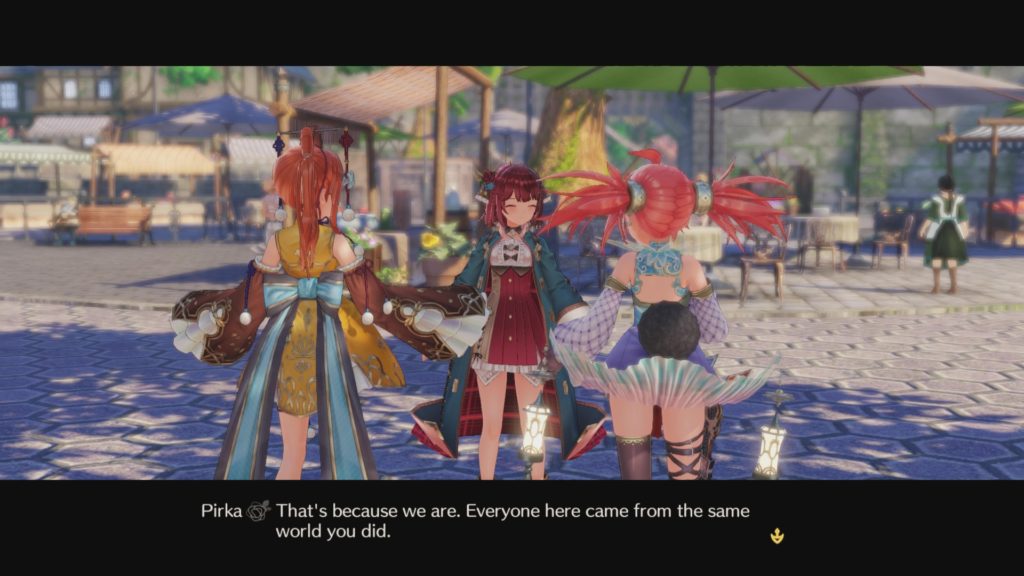
Owing to Erde Wiege’s nature of being outside normal space and time, its population is drawn from more than just Sophie’s own time period. And thus Sophie is surprised to discover the presence of two people in this world in particular: Plachta as a teenage girl, prior to her soul and body being separated, and her grandmother Ramizel as a twentysomething.
These are, not coincidentally, the two people that Sophie loves and respects more than anyone else in the world, but the fact that she’s meeting them in a whole different context to what she’s accustomed to initially makes things a little awkward.
In Plachta’s case, it is initially tricky for Sophie to understand that her role has been reverse from what she’s accustomed to — now she’s the mentor to the relatively inexperienced young Plachta — while in Ramizel’s case, Sophie really doesn’t know how to cope with the sight of her grandmother in her absolute prime. Ramizel, as an unmarried young woman at the time of Atelier Sophie 2’s story, also isn’t quite sure what to make of Sophie being her granddaughter, and there are some delightfully heartwarming scenes between the pair of them as they struggle to define their new relationship.
Initially, much like in the original Atelier Sophie, there doesn’t appear to be any real “threat” in the world of Atelier Sophie 2. Instead, much of the early part of the story is spent getting to know the inhabitants of Erde Wiege — particularly those who become the game’s playable party members and those who run the most important facilities in town. And each of these people has their own interesting story to tell.
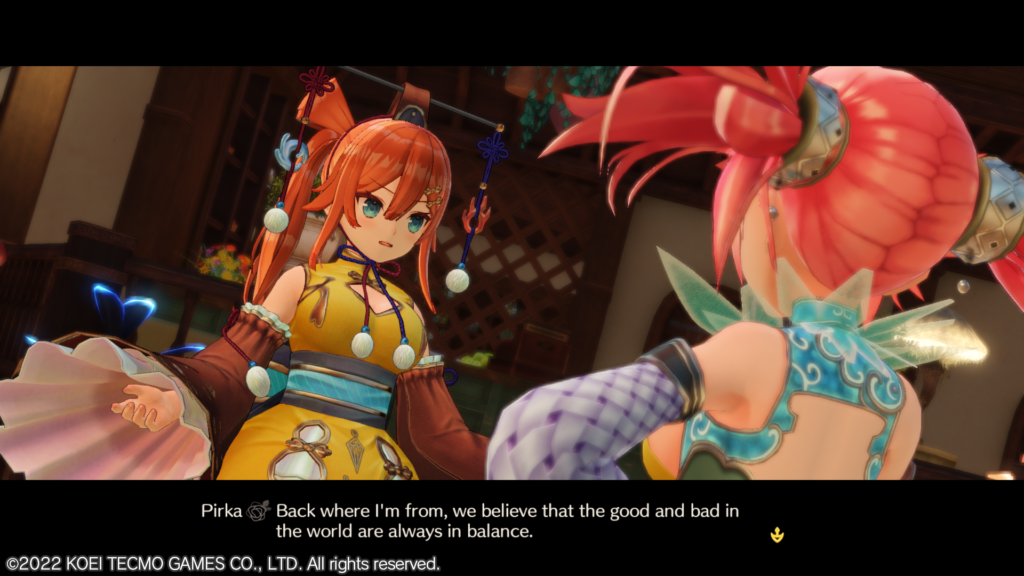
Pirka, one of the first characters you meet, provides an immediate connection with the original Atelier Sophie in that she appears to hail from the same Asian-inspired clan that the character Corneria was from. It appears that they come from different time periods, however, since in Atelier Sophie (and the third Mysterious game, Atelier Lydie & Suelle) Corneria is depicted as trying to find out more about her background, while Pirka appears mostly knowledgeable about her clan and its situation.
Pirka is a cheerful merchant; her dream is somewhat vaguely defined as wanting to find a means to allow her clan to thrive in the future, since it appears she came to Erde Wiege while it was suffering hard times. In many ways, her dream isn’t the most important aspect of her character, though; instead, she’s a living case study in coming to understand yourself and your own limitations.
Pirka, like Corneria, has the incredibly useful ability to make exact duplicates of items. This is, as you might expect, extremely convenient from a gameplay perspective, but like in Atelier Sophie we’re given a narrative reason to at least think about making use of her services before just blindly spending our money. Both Corneria and Pirka suffer side-effects from using their ability too much, you see: Corneria gets shorter, while Pirka, it transpires over the course of Atelier Sophie 2’s narrative, finds herself extremely fatigued, often uncontrollably falling asleep.
Over the course of Pirka’s narrative in Atelier Sophie 2, we see a fairly potent lesson in the concept of burnout — and how sometimes it takes people who care about you to see you struggling before you’re able to do anything about it yourself. Pirka always puts a brave, cheerful face on things even when she’s having difficulty — but once Sophie manages to help her out with her problem, she finds it hard to deny that there actually was a problem that she simply hadn’t been acknowledging properly.
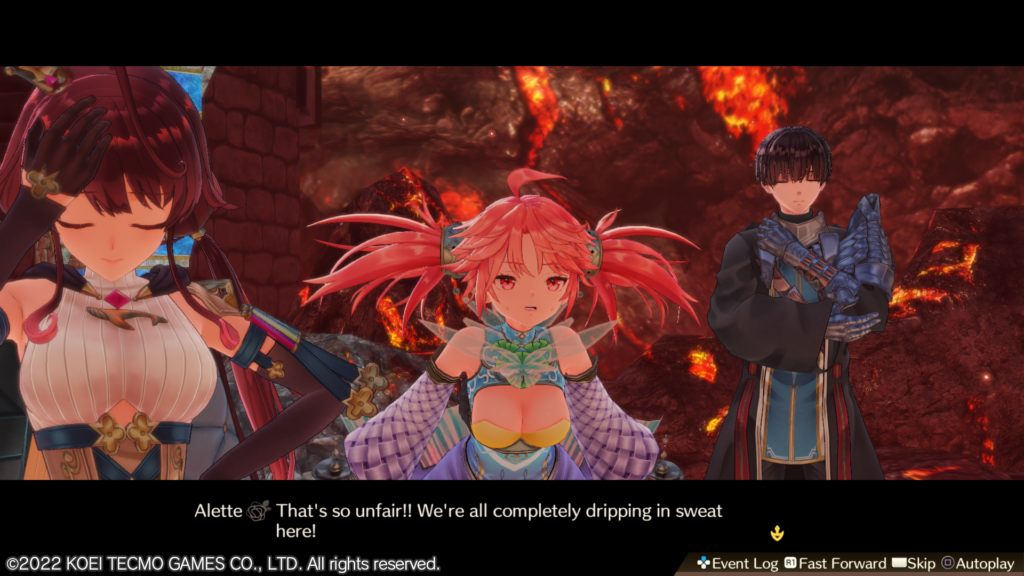
About the same time we meet Pirka, we meet Alette, a young girl who dreams of being a successful merchant. To that end, she often works alongside Pirka, who took her in when she first arrived in Erde Wiege, and quickly attaches herself to Sophie when she realises that Sophie is a great source of new items that she might be able to sell. She even finds herself selling Sophie’s alchemy failures as objets d’art — something which Sophie isn’t quite sure how to feel about.
While Alette certainly has a selfish and somewhat spoiled streak to her, she’s also extremely grateful to those who help her out, and supportive in return. While she initially joins Sophie because she thinks there might be profit in it, it doesn’t take long for her to become a close and valued friend. And, over the course of her complete narrative, she learns an important lesson about procrastination. At some point, you have to stop “getting ready” to do something, and actually do it.
In other words, Alette is depicted as someone who talks a big game, but is sometimes a bit hesitant to actually follow through on it. Her dream is supposedly to be a successful merchant in the real world, but rather than using what appear to already be some formidable skills at the time we first meet her to achieve that dream, she stays in Erde Wiege. There’s always one more bit of treasure she might be able to find and sell, some means of refining her skills — or, for a brief moment, the feeling that adding a new skill like alchemy to her repertoire might make her ventures even more profitable.
By spending time with Sophie, who is emphatically someone who Gets Things Done, Alette learns that at some point, you have to draw a line, say “this is it” and jump head-first into the thing you’ve been putting off. It’s a potent and relevant message for today’s age, and one we can all learn from.
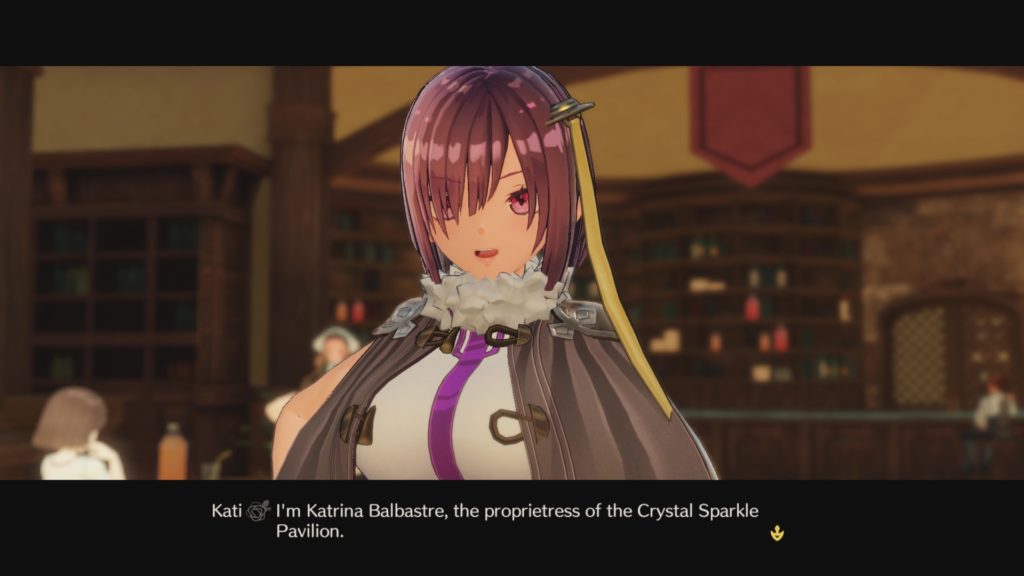
Elsewhere in Erde Wiege’s main town Roytale, we have Kati, who runs the local tavern and works on the side as an archivist. Actually, that’s not quite true; more often than not she’s goofing off at the tavern and letting her assistant Gnome do all the work, but her work keeping records of everything that goes on in Roytale and Erde Wiege is something she genuinely feels passionate about. She was once an important official in the Observation Institute — an organisation we find out quite a bit more about in Atelier Firis — and, it seems, old habits die hard.
Kati’s core lesson is a simple one: pursuing something you’re genuinely interested in and passionate about is always going to net better results than doing something just for the sake of it. This isn’t to say that she dislikes her work as the keeper of the delightfully named Crystal Sparkle Pavilion, mind; she particularly enjoys the opportunity it provides to speak with the many and varied people who come to Erde Wiege from various time periods and far-flung places.
The important thing, though, is that she’s not doing it because she’s particularly passionate about the hospitality business. Rather, she’s fascinated by stories. And the best place in town to hear wonderful stories from people is, of course, the tavern. Thus, positioning herself as the main innkeeper — even if she does very little of the actual innkeeping work — means that she’s in a great place to acquire even more material for her comprehensive, meticulous records.
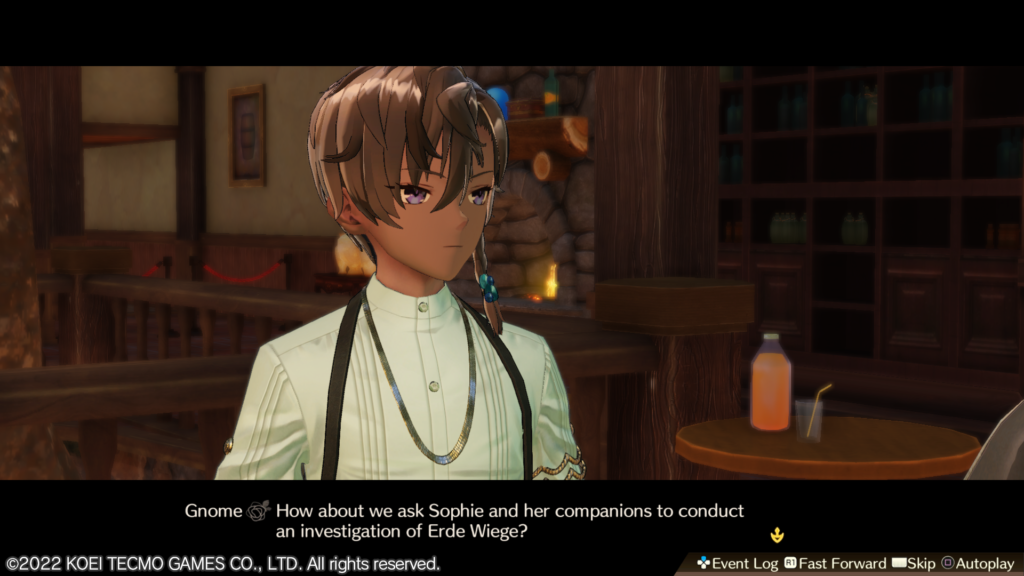
The aforementioned Gnome, meanwhile, is strongly implied to have come from a background of extreme privilege, likely royalty, and he actually relishes the opportunity to get down in the dirt and do some honest work. While he often criticises Kati for her indolence, it’s clear early on that he genuinely enjoys the opportunity to develop his own skills — particularly as those skills, such as working closely with the public and cooking food, would never have been part of his world back home — and, over time, starts to expand his horizons somewhat.
Specifically, he starts exploring the idea of becoming an artist. And while Kati believes that this means he’s going to “fly the nest”, as she puts it, he promptly surprises her by indicating that he has absolutely no intention of giving up the honest work that he feels such satisfaction for.
He’s found a place for himself at the Crystal Sparkle Pavilion, and intends to keep making the most of that. His art is simply something else he wishes to explore alongside it — thereby highlighting the fact that one can have multiple strings to one’s bow, and that it’s healthy to have interests outside your core occupation. You shouldn’t let your work be the only thing that defines you, after all.
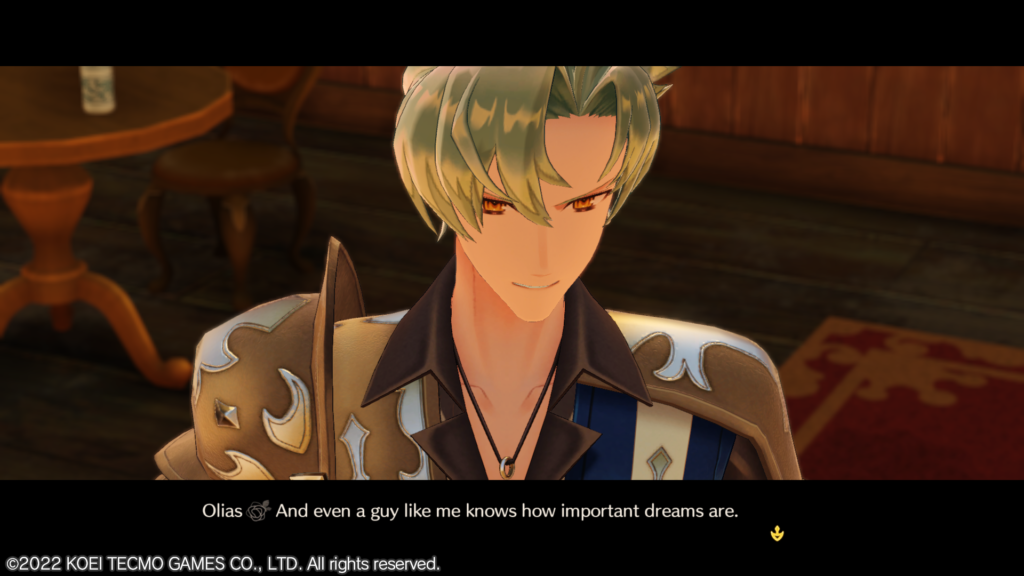
Olias is a character who could perhaps take this advice to heart, since he’s habitually describing himself as the greatest bodyguard that Erde Wiege has ever seen, and seemingly constantly working for the local population, even once he signs up to follow along with Sophie on her various adventures. In Olias’ case, though, it’s not the fact that he’s letting his work define him that is the problem — rather, it’s how he’s using his work as a means of running away from the thoughts and feelings that he really needs to confront.
Olias feels intense guilt about leaving his family behind — not from coming to Erde Wiege, but from setting off on his own journey of personal discovery back in the real world by joining a mercenary group. It’s Sophie’s appearance that causes him to start feeling nostalgic and regretful; Sophie, it seems, resembles his little sister, and her constant presence makes him think that he should probably start thinking about how they’re doing, how he might be able to approach them again after so long — and even if that’s something he might be able to do.
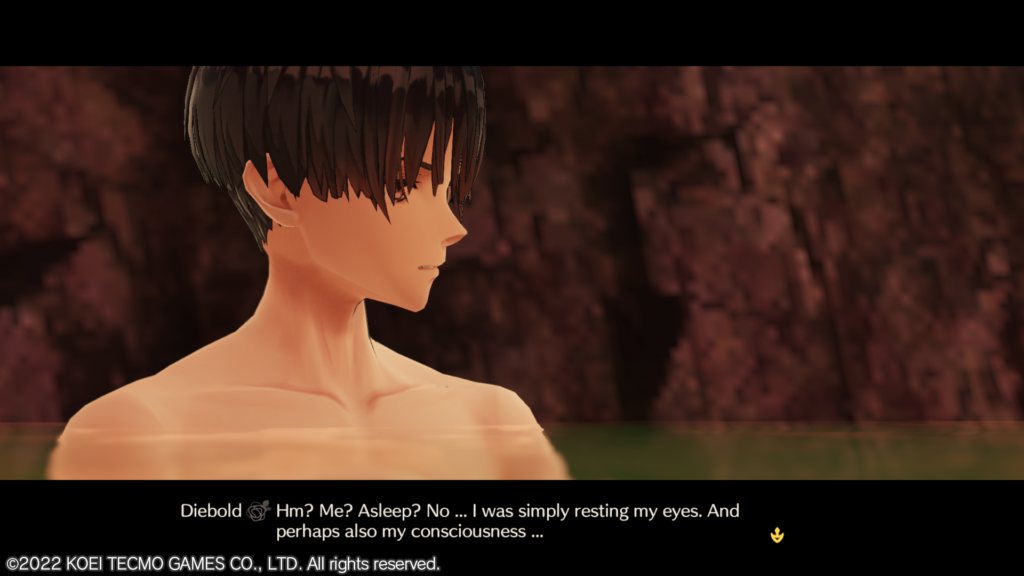
Likewise, Diebold, Olias’ best friend and a fellow bodyguard in Erde Wiege, also feels regret over his past, but for a different reason. Diebold used to be a knight back where he came from, but, much like Sterk in the Atelier Arland series, found himself living through a time in history where knighthood in his home country became all but irrelevant. Feeling cast aside by what he had once assumed to be his life’s calling, he sold his shield — his symbol of knighthood — and, from thereon, believed that he had no right to call himself a knight.
On top of all this, he’s obsessed to a fault with the pursuit of a deadly dragon called Zmei — though, as you may well imagine, his dogged attempts to track down this powerful foe are simply a means of avoiding having to confront his own feelings, and of having to accept himself. It’s easy to suspect that his attempts to defeat Zmei may even have been a suicide mission at one point; he wouldn’t feel any further guilt over his own failings if he was dead, after all.
As Sophie puts it, if the people who claimed that Diebold could be a knight by giving him that shield could just as easily decide that knights were no longer needed, what meaning did the shield really have? “Being a knight”, so far as she was concerned, was all about attitude and actions, not what symbols of office you happened to have on your person. And, over the course of Atelier Sophie 2’s narrative, Diebold demonstrates himself to be an incredibly reliable person — one who learns to find true joy in standing up for those who aren’t able to protect themselves. A true knight, in other words.
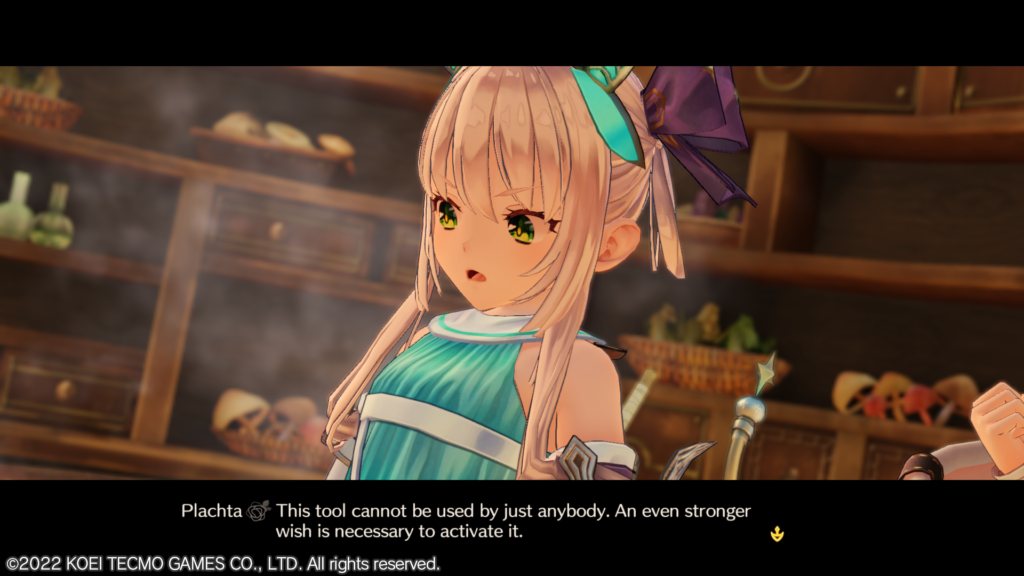
Then we come to Plachta who, as we’ve already discussed, ends up in a role somewhat “inferior” to Sophie, having obviously spent some time by herself in Erde Wiege as “the one who can do alchemy pretty well”. Naturally, it takes some time for Plachta to warm up to Sophie, but it also takes Sophie time to adjust to the fact that she really is more capable than Plachta is, at least at the outset of the narrative.
Sophie is also forced into this understanding by the fact that, for a significant part of the early game, “her” Plachta from her own time ended up with her soul cast adrift from her body, meaning that “young Plachta” is the only one she’s able to reliably interact with. And, while the two of them are the same person in some respects, they are also quite different people; “doll Plachta” has several centuries on “young Plachta”, after all.
This, of course, raises an interesting question: why hasn’t doll Plachta brought any of this up before? And don’t say “because Atelier Sophie 2 wasn’t originally planned as part of the Mysterious series”, even if that’s true.
From a narrative perspective, there’s a temporal causality element to consider here; if young Plachta remembered what unfolded in Erde Wiege, she would have known that someday she would lose her body as a result of the events explained in the first Atelier Sophie, and the natural response to that is to try and stop it from happening. But if she did that, doll Plachta would never meet Sophie in the first place, and things would unravel from there.
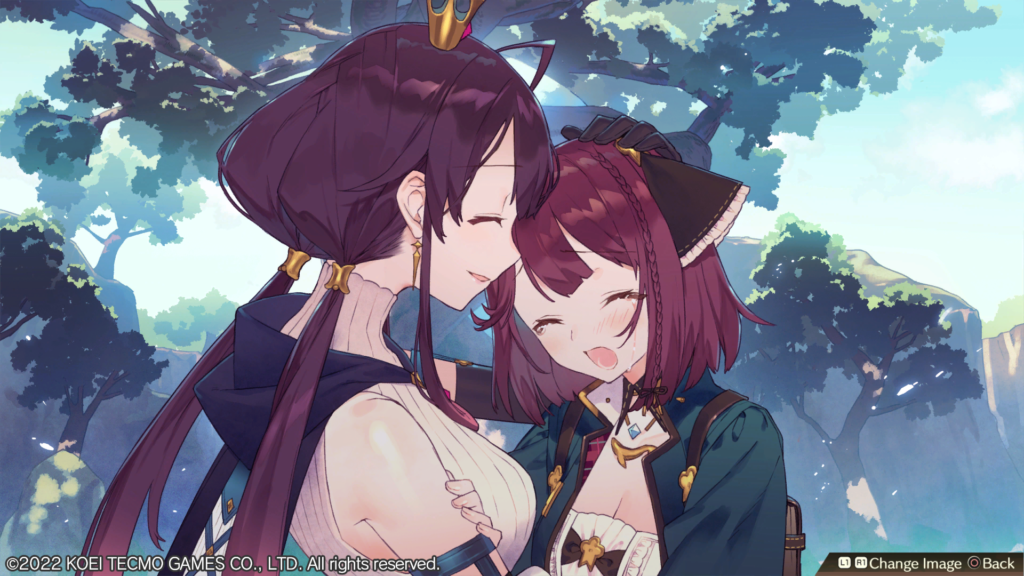
The same can be said for a certain extent when we look at Ramizel, Sophie’s grandmother. Sophie absolutely adored her grandmother, and in Atelier Sophie 2’s ending we see quite how much; when presented with the prospect of having to say goodbye to Ramizel once again — albeit this time with Ramizel in a much younger form — Sophie breaks down in tears in a rare explosion of emotion for her.
This is a huge moment for the character, since one of Sophie’s defining features is taking even the most terrifying and upsetting things absolutely in her stride — but it seems that her grandmother’s passing before the events of the original Atelier Sophie hit her harder than anything else in her life. And it’s not hard to understand why; Ramizel is a formidable woman, even at her relatively tender age in Atelier Sophie 2, and one can only imagine what she would be capable of having been inspired by her own granddaughter after her experiences in Erde Wiege.
Again, though, Ramizel never brought this up before, and the reasons are quite different to Plachta’s philosophy on the whole situation. While young Plachta doesn’t trust herself not to try and “improve” her own future in such a way that will unravel everything that just happened, Ramizel is wise. While young Plachta chooses to deliberately sacrifice her memories of her time in Erde Wiege when the time comes, Ramizel makes no such promise; instead, she carries the knowledge of her own time in Erde Wiege — and the love she developed for her yet-to-be-born granddaughter — and uses it to make her future even more secure.
To put it another way, when Sophie is finally born, Ramizel isn’t meeting her for the first time; it’s a long-awaited reunion. No wonder they ended up so close.

And then finally, we come to the Goddess of Dreams herself, Elvira. Elvira is a thoroughly interesting character in that she may be a divine entity, but she’s deeply, deeply flawed in so many ways. Initially, we see her locking herself away in her own pocket dimension so that she is never able to appear to the people she summoned to Erde Wiege, believing this to be the right and proper thing to do. She also feels responsibility for doll Plachta’s soul becoming detached from her body, and doesn’t want to face the consequences of this or ask for help.
Ramizel, having dealt with Elvira’s bullshit for quite some time long before the events of Atelier Sophie 2 get underway — for reasons that become apparent during the game’s finale sequence — absolutely isn’t above giving the Goddess of Dreams a good scolding and making her cry, but it’s through this “tough love” that Elvira comes to understand that locking herself away and pretending that she has nothing to do with what is going on is not, by any means, the optimal way of approaching a situation.
Rather, through interacting with Sophie and her friends, Elvira begins to develop confidence in approaching others and achieving something she always wanted to accomplish for herself: to talk to people directly about their dreams rather than simply observing from afar. Yes, the Goddess of Dreams has a dream for herself, too — but she’s been afraid to try and make it come true for the longest time, for fear of the consequences.
And, to be fair, those consequences are pretty severe; Elvira’s true role in the cosmos is to observe humanity dreaming and purge them of their nightmares. She’s not supposed to interfere directly with human existence, much less make a whole world for them to lark about in — a world which is at least partly defined by both the dreams and nightmares of those who enter it. Making a world takes a great amount of power, after all — and the “Dream Cores” which hold Erde Wiege together are, it transpires, material manifestations of Elvira’s power, forcibly detached from her body.
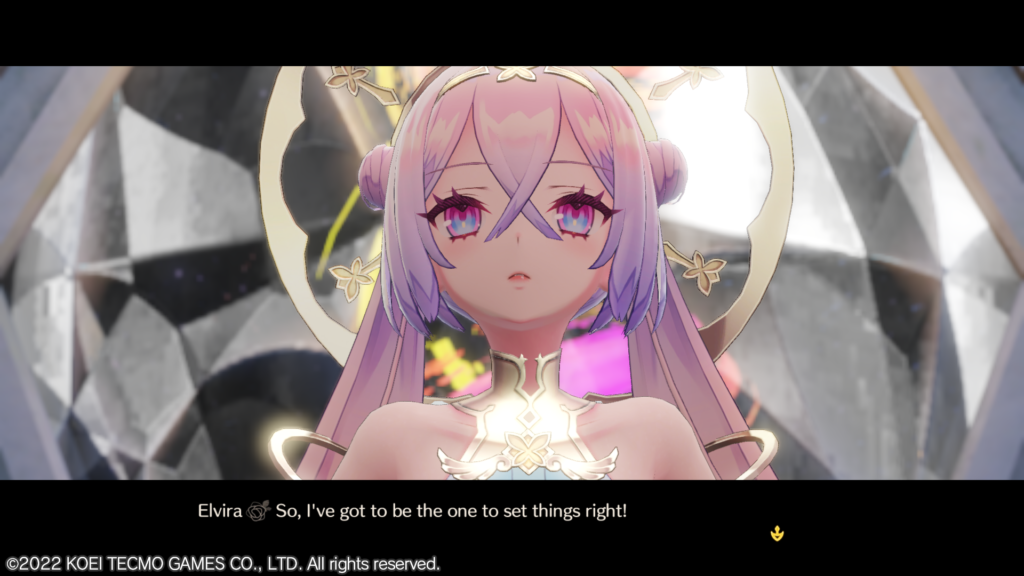
This, naturally, means that Elvira as she exists at the time of Atelier Sophie 2’s narrative is at a fraction of her full strength, and is consequently unable to truly stem the tide of nightmare creatures, known as Groll. As the story actually builds to a climax in its later hours, Elvira even finds herself attempting to use her power to absorb the Groll who are taking over the citizens of Roytale, turning them into apathetic, exhausted messes rather than optimistic dreamers — only to discover that the power she has left isn’t enough to prevent herself from getting possessed upon absorbing all those pesky Groll. I’m sure you can tell where this is going.
As an aside, it’s interesting to see another Japanese RPG positioning the concept of apathy and poor mental health as a more significant threat than actual physical violence and death; it’s been an increasingly common theme in titles such as the Persona series and its ilk over the course of the last decade or so, and this is perhaps symptomatic of a collective, worldwide state of perpetual existential crisis. There’s a cheery thought for your afternoon.
Naturally, the only thing to do is to kick the snot out of the possessed Elvira until she comes to her senses, then forcibly eject the Groll from her system by making use of the power of alchemy. Naturally, with Atelier Sophie 2 at least partly being Plachta’s story, Plachta gets to do the most important part of this process, but Sophie certainly doesn’t just stand back and watch, either. Indeed, it’s her ability to “hear the voices of materials” — a concept explored further in Atelier Firis — that ultimately leads everyone to a suitable solution to the problem.
Elvira’s situation can be looked at superficially as your common-or-garden JRPG god gone mad, but at its core there’s a relatable lesson to be learned, too. Elvira’s main struggle is one of self-confidence with regard to her own creativity: Erde Wiege is something she made herself and released into the world, and she is initially too terrified to even contemplate what the consequences of releasing her magnum opus might be.
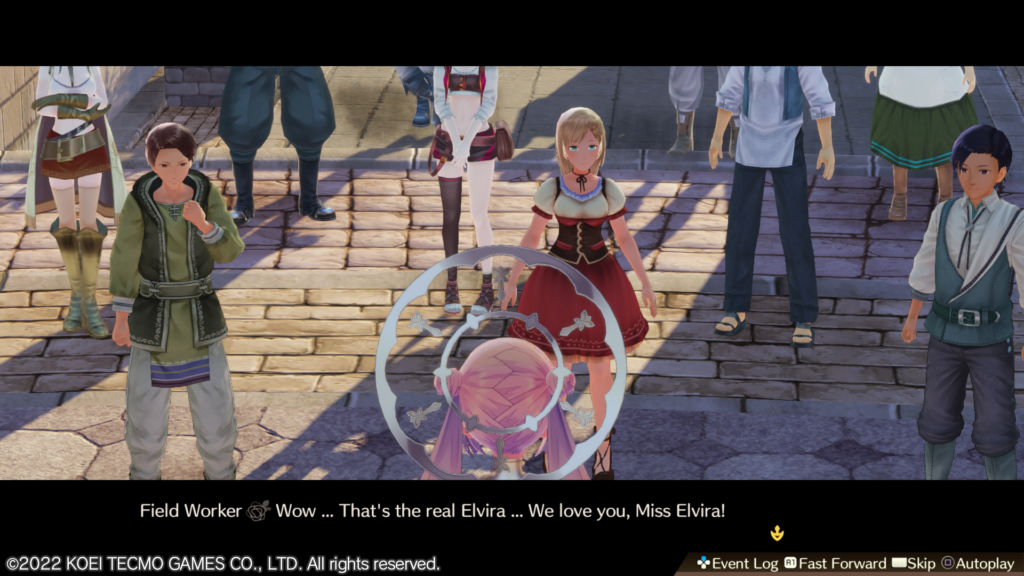
When she discovers that people actually very much like the thing that she created, she becomes complacent, perhaps even arrogant, and believes that she can do anything. But, as they say, pride comes before a fall — and the subsequent fallout of everything that happens is an apt metaphor for what occurs when a popular creative work gets co-opted by people who might use it to do harm, or as justification for their own actions. It may never have been the intention of the original creator for the work to be used that way — but once it’s out there, it’s very difficult to stop people using it that way, or interpreting it in a way that they see fit.
Elvira is in a unique position, though, in that she is actually able to “take back” her work having seen what the potential consequences are. Of course, doing so means taking it away from those who have done nothing but enjoy it for innocent reasons, and that in itself carries its own risks, plus a hefty dose of doubt and guilt. But part of Elvira’s right as a creator is to say that her work is finished once and for all, and to close the book on it. No-one in her “audience” really has a right to complain about that, given that she literally put herself into its production in this instance.
Fortunately, Elvira didn’t have to worry; her creative work had such an impact on the people who were able to engage with it first-hand that it changed their lives for the better. And even if they are unable to continue to enjoy it from hereon, their memories of the time when they were able to immerse themselves fully in it will always remain with them. Even young Plachta, who, as we’ve already said, deliberately asks Elvira to wipe her memories before sending her back to the real world, recognises that she’ll always carry her time in Erde Wiege somewhere deep in her heart — and that it will show itself to have made her a better person in the long term.
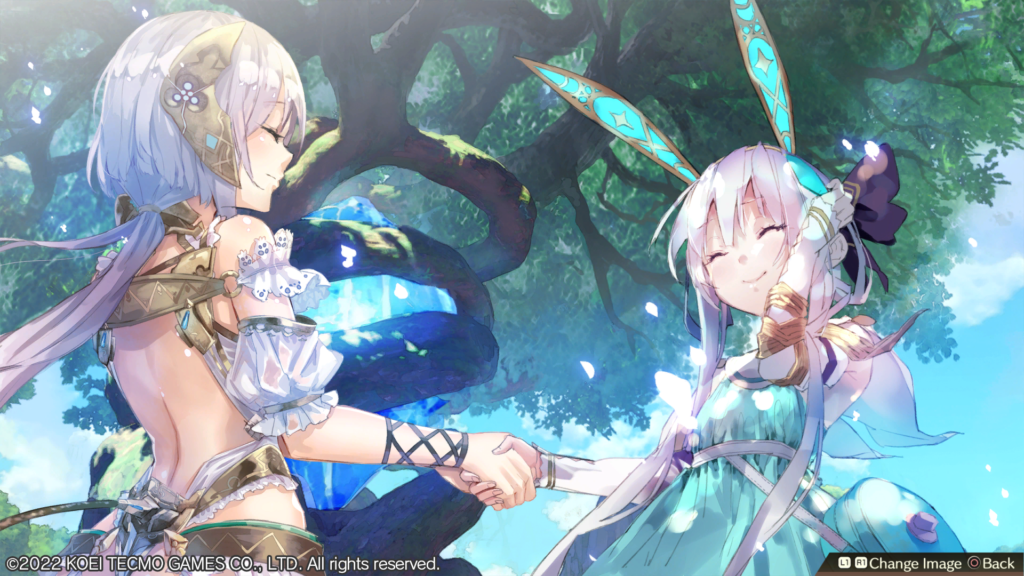
A good dream is a good dream, then — but ultimately someday one has to accept that it is nothing but a dream. You can draw inspiration from that dream and use it to push yourself forwards in your real life, yes — but ultimately at some point you have to leave the dream itself behind.
As the credits roll on the somewhat bittersweet yet heartwarming ending to Atelier Sophie 2, that’s the message we’re left with; while nothing that just happened had a tangible impact on the “real” world, the effect on everyone’s own inner world will be felt forever. And that, really, is the power of dreams.
Atelier Sophie 2 is out now for Nintendo Switch, PlayStation 4 and PC.
Join The Discussion
Rice Digital Discord
Rice Digital Twitter
Rice Digital Facebook
Or write us a letter for the Rice Digital Friday Letters Page by clicking here!
Disclosure: Some links in this article may be affiliate links, which means we may earn a small commission if you make a purchase after clicking on them. This is at no additional cost to you and helps support Rice Digital!
- Letter from the Editor: passing the torch - June 30, 2023
- Super Woden GP 2 is looking promising - June 30, 2023
- Inti Creates is making a 32 bit-style Love Live action platformer - June 26, 2023





